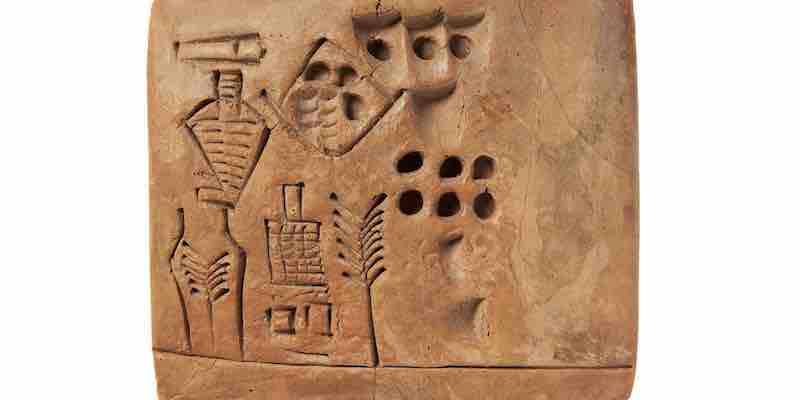AI translates 5,000-year-old cuneiform tablets into English.

Cuneiform, one of the earliest writing systems dating back to 3400 BC, has been challenging for translators due to its complexity and age. However, a groundbreaking development in artificial intelligence (AI) has made it possible to translate texts written in cuneiform, specifically in the Akkadian language, into English. This advancement results from a study by Shai Gordin and colleagues from Ariel University.
The Akkadian language, part of the Semitic language family, was used in ancient Mesopotamia and written in cuneiform script on clay tablets. Similarly, Sumerian, another language using cuneiform and considered a language isolate, was spoken in ancient Sumer. The complete decipherment of cuneiform took over two centuries, starting with the Behistun Inscription, which included Old Persian, Elamite, and Akkadian cuneiform.
The AI model developed by Gordin’s team can translate Akkadian cuneiform into English, marking a significant achievement in language translation automation. The model was trained in two versions: one translated Akkadian from cuneiform representations into Latin script (transliteration) and another translated from Unicode representations of cuneiform signs. The first version achieved a BLEU4 score of 37.47, indicating a high level of accuracy for a language as complex as cuneiform.
While the AI model excels in translating short and medium-length sentences, it struggles with longer sentences and sometimes “hallucinates” outcomes that are syntactically correct but unrelated to the original text’s meaning. Despite these limitations, the AI’s translations are handy for first-pass interpretations and could significantly aid scholars and students in studying these ancient languages. The technology also holds potential for broader applications in classrooms, museums, and interactive historical experiences, offering a new way to engage with the past.
Bridging Historical Gaps: The Impact of AI on Understanding Ancient Civilizations
The advent of AI-assisted translations of ancient texts like cuneiform has the potential to enhance our understanding of early human civilizations significantly. This technology can unlock the meanings of texts that have been indecipherable for centuries, offering new insights into the daily lives, cultures, beliefs, and knowledge of ancient societies. By translating these texts, AI can fill historical gaps, providing a more comprehensive and nuanced understanding of our past. This could lead to the revision of existing historical narratives and the discovery of previously unknown aspects of ancient civilizations.
Technological Limitations and Improvements in AI Translations
Currently, AI faces several limitations in accurately translating complex ancient languages. These include the challenges of understanding context, idiomatic expressions, and the subtleties of ancient dialects. AI models may also struggle with longer texts where maintaining consistent meaning throughout is essential. Future developments could focus on enhancing AI’s contextual understanding and ability to learn from a broader range of linguistic nuances to overcome these challenges. Incorporating more diverse datasets and improving algorithms to handle complex linguistic structures could lead to more accurate and reliable translations.
Ethical and Educational Implications of AI in Historical Text Translation
Using AI to translate and interpret historical texts raises several ethical and educational considerations. Ethically, there is a need to ensure that AI translations respect the cultural and historical significance of ancient texts, avoiding misinterpretation or misrepresentation of the original content. Educationally, AI translations could revolutionize the study of ancient languages and cultures, making them more accessible to students and researchers worldwide. However, balancing AI with traditional linguistic scholarship is crucial to ensure a comprehensive understanding of these texts. Integrating AI into historical studies could foster a new generation of scholars adept at combining conventional linguistic skills with advanced technological tools.
The article is “AI translates 5,000-year-old cuneiform tablets into English.“